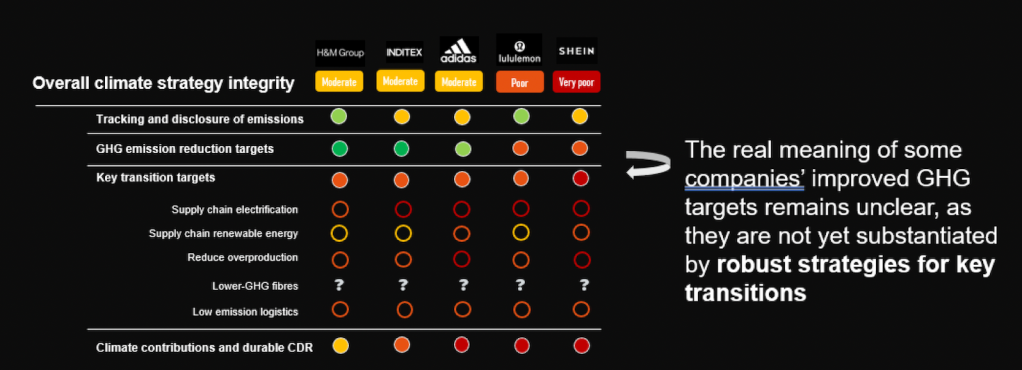Apparel brands should champion the most powerful strategies to lessen their emissions — or at least slow their rate of increase. For starters, switching to renewables across electrified supply chains would go a long way. So would abandoning wasteful fast fashion business models.
And yet major companies are mostly ignoring these proven paths, according to an analysis of Adidas, H&M Group, Inditex, Lululemon and Shein undertaken by two European nonprofits.
The New Climate Institute and Carbon Market Watch described significant improvements in fashion decarbonization and circularity over previous years in their annual “Corporate Climate Responsibility Monitor,” released June 25. (The report follows parallel research about the food industry and technology giants earlier in June.) “We’re looking at much better strategies than we were three years ago for the sector, which is great,” said Thomas Day, a climate policy analyst at the New Climate Institute.
That’s the good news.
The bad: “Fundamental transitions are still missing,” Day added, citing “this exaggerated race-to-the-top dynamic that we have now for corporate claims, where companies just kind of say that everything’s fine, yet in the background might [only] be slowly ramping up their strategies.”
Exaggerated targets
The Science-Based Targets initiative (SBTi) has validated the net zero targets for each of the five brands. But the goals of Lululemon and Shein lack integrity, the authors found. For example, the emissions of both companies have actually surged in recent years.
And while Adidas and Inditex are also aligned with the Paris Agreement, only H&M stands out for backing up its greenhouse gas reduction targets with detailed transition plans, the report noted.
With so many corporate targets now validated by the SBTi, there’s little incentive to be a front runner. It’s also difficult to identify good practices when people perceive the standards as watered down, according to Day. “I think at this stage it’s time for a rethink, but that’s what [the SBTi is] currently in the process of doing,” he said.
Ridding supply chains of fossil fuels
Although H&M, Inditex and Lululemon set targets for renewable electricity in their supply chains by 2030, they lean too hard on Renewable Energy Certificates (RECs), researchers charged. And at apparel plants, companies too often use the “false solutions” of natural gas or biomass to replace coal.
“The key thing is to electrify those supply chains,” Day said. “Stop using coal or boilers, but also don’t just switch out coal boilers for biomass or gas — electrify processes. That’s a fundamental step to being able to use renewable energy. This is where companies need to see movement, and we’re not seeing it at all.”
H&M is the only major brand breaking down its supply chain energy mix (59 percent fossil gas, 11 percent electricity, and 3 percent each for coal and biomass). Yet even this lacks needed detail, according to the report.

Adopting circular business models
The authors advocated for business models to change not only to slow the roll of overproduction and waste, but
Read More

